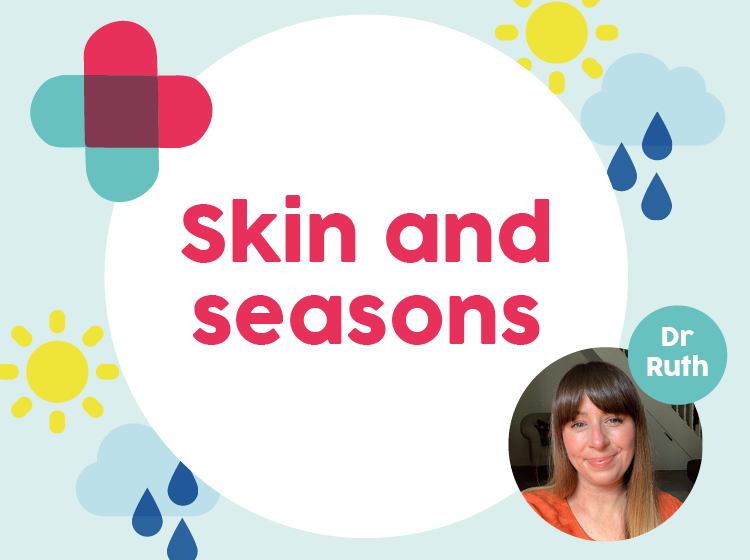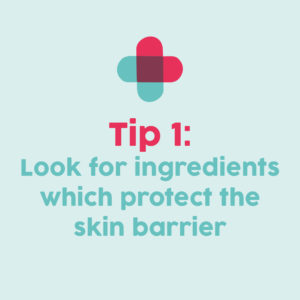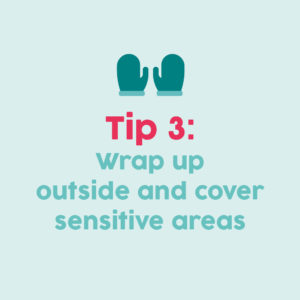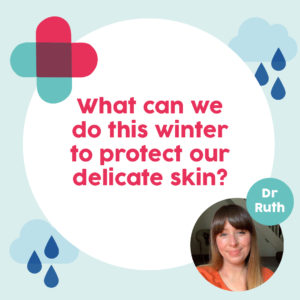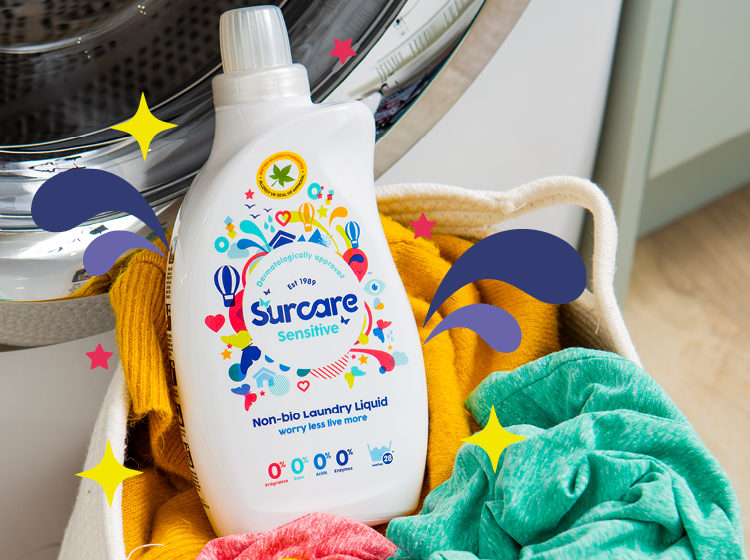Frosty mornings, red noses, blankets, hot chocolate and cosying up at home; winter in all its gloriousness! It is the season where nature slows down and waits. We mirror that hibernation by resting, recovering and saving our energy for brighter times. However, with more time spent indoors and colder temperatures outside, those of us with sensitive skin can struggle. Dryness, irritation and inflammation can cause pain, sleepless nights and leave us feeling far from our glowing best. What can we do this winter to protect our delicate skin and maximise our enjoyment of the chilly season?
Let’s go back to basics. The skin is our largest organ; our first line of defence against our environment, be that temperature changes, UV light or pollution. As a barrier it keeps moisture in, controls our temperature and protects us from infection. It helps us to make Vitamin D, for healthy bones and a balanced immune system. The average adult has two square metres of skin and despite being only a few millimetres thick, it makes up about a seventh of our body weight. Our skin is also how we greet the world, with ‘glowing’ skin being the ultimate beauty aim. So, when we’re struggling with a skin condition, it can massively affect our self-esteem and confidence.
How do colder temperatures effect our skin? The skin barrier is made up of skin cells, lipids and fatty acids. A crucial part of this outer layer are ceramides, a lipid which acts like the cement keeping a wall from falling down. They make skin softer and form a waterproof seal, preventing water loss and dehydration. In winter, dry air, cold winds and indoor heating lead to the skin losing water to the environment. That’s why we need to work extra hard in winter to keep our skin barrier moisturised, to counteract the effects of drier air and lower humidity.
Signs that may suggest your skin barrier is damaged include sore, dry and inflamed skin which is more reactive to products. Eczema is a common condition which is characterised by a faulty skin barrier and an exaggerated allergic response. It is particularly common in babies and children under the age of five. Children and parents can both suffer from the effects of sleepless, itchy nights, time consuming regimes with emollients and days lost from work and school. Another common time to have sensitive skin is over 50. As we age, the ceramide ‘building blocks’ in our skin barrier decrease, leading to drier skin which is more vulnerable to irritation. For women, as the hormone oestrogen drops with the menopause, skin becomes less elastic and tends to produce less oil. It is a common time for skin to become reactive to fragrance, metal and dyes. These conditions worsen in winter as a dry skin barrier is less able to carry out its protective function and more likely to react to allergens such as perfumes, harsh detergents and dust.
The rate of allergies in the UK is rising. Contact dermatitis is a condition where the skin shows signs of an allergic reaction after being in contact with a substance, e.g. nickel in a belt buckle. This can either happen immediately or with a delayed reaction, like hair dye. Common allergens are nickel, latex and fragrance. It can be helpful to track your symptoms and look for clues of when your skin flares. Is it better when you’re not at work? Does your skin only flare in certain places like your hands? Do you notice your skin becomes red after using certain products? Both fragrance and sodium lauryl sulphate (SLS) are used in numerous household products and skin care. SLS works by attracting water and breaking down oil and debris, so it is often found in cleansers, shampoos and laundry products. Those of us with a sensitive skin barrier, need those natural skin oils for hydration, so SLS containing products can lead to dryness and irritation. If you suspect a contact allergy, see your GP to arrange patch testing.
Frustratingly, most of us with sensitive skin, can react to a myriad of allergens rather than having a true contact dermatitis. This is called contact irritation and is more likely when the skin is dry as it allows allergens to enter the tiny gaps between our skin cells and cause inflammation. Common culprits are essential oils, fragrance, dust, pollen, dyes, soaps and detergents.
Top tips for looking after your skin this winter
Building a strong barrier is a vital part of managing sensitive skin. Well moisturised skin is less damaged, more able to deal with allergens and less likely to get irritated. It’s often trial and error to find an emollient that works for you, there’s no magic cream that works for everyone. Notice how your skin feels after you use a product and don’t use anything new for at least 6 weeks as skin takes time to regenerate.
Tip – look for ingredients which protect the skin barrier; ceramides, glycerine, squalene, colloidal oatmeal and shea butter. Ceramides in particular help to soften, increase hydration and create a protective layer. Some of us are sensitive to fragrance, particularly from essential oils. Apply moisturiser when the skin is damp to help trap in moisture, especially if using a humectant product like glycerine. Keep your skin care routine simple, no harsh cleansing that strips the skin of natural oils and apply an SPF all year round.
Think about how much our skin is in contact with our clothes, towels, pillow cases and bedding. We know that fragrance can be irritating to delicate skin, so using products which are formulated for sensitive skin is essential. Allergy UK has a list of approved products listed at www.allergyuk.org including household cleaners and skincare.
Tip – Try a non-bio laundry product like Surcare laundry liquid and fabric softener which contains no fragrance, dyes, acids or enzymes. Some washing machines have anti-allergy settings which use higher temperatures of 60 degrees and an extra rinse to remove allergens like pet dander. If you spend a night away from home, take a pillowcase washed in your usual laundry product.
Temperature changes can not only dry the skin, but the sudden change when going inside to a heated house, can make the skin itchy when the blood vessels of the skin dilate. Exposing the skin to cold air outside can be abrasive too. Hot showers or baths can cause dryness and reactivate inflammation.
Tip – Wrap up outside and cover sensitive areas like the face with a scarf. Cotton and silk can be cooler on the skin and layering these under jumpers can be less irritating. Make sure all products are washed in your usual laundry product. Try keeping the heating on lower at home and a humidifier can be helpful especially in your bedroom. Switching to greasier emollients as winter approaches, can help reduce seasonal moisture loss.
It’s been a tough year for our hands with more hand washing and alcohol gel. Dryness and irritation from different products have left many people with hand dermatitis which can be very painful. Those hands need some TLC!
Tip – Washing our hands for 20 seconds with soap and hot water can leave skin feeling tight and dry. Liberally applying a thicker balm or greasy emollient at night under cotton gloves, can help the skin barrier repair whilst you sleep. They can also be helpful if you scratch at night. Our hands are exposed to fragrance too when we wash up; Surcare have a washing up liquid with no added perfume or use rubber gloves like your granny used to.
A diet which is good for your overall health is also good for your skin. Eating a balanced and diverse diet will provide you with all the essential vitamins and minerals needed for good skin health. Colourful fruit and vegetables contain anti-oxidants which protect and repair the skin. Healthy skin also needs adequate hydration and guidance recommends a minimum of six to eight glasses of water a day. Omega 3 fatty acids from oily fish, walnuts and flaxseed help maintain the natural oil barrier of the skin.
Tip – Diversity in your diet is key. Try purple and red berries which are rich in anti-oxidants, eat healthy fats and try adding nuts and seeds to your breakfast for a zinc, magnesium and selenium boost. Hydrating foods like cucumber and melon can ensure you have enough water from food as well as drinks.
Vitamin D is a fat-soluble vitamin which helps to regulate our immune system. The body makes it from direct sunlight on the skin during summer and a small amount is found in oily fish, eggs, red meat and fortified products. There have been links with low Vitamin D and severity of eczema symptoms, although these studies were small. The good news is we need to be taking it anyway between October and March.
Tip – Find the UK guidance for children and adults on www.nhs.uk which advises all adults to take 10mcg (400IU) Vitamin D daily in winter and a lower dose for children.
We spend much more time inside during winter. Mould spores and dust mites thrive in warm homes with poor ventilation. Eczema in particular can be triggered by dust, perfume and cleaning products. The good news is there are many ways to improve indoor pollutants at home.
Tip – remove candles and indoor fragrance if possible, especially in the bedroom. Keep rooms well ventilated each day to reduce moisture. Keep bedrooms clutter free and dust regularly with a damp cloth, especially behind radiators. Wash pillows and duvets at least twice a year at 60 degrees to reduce dust mites.
Remember that it’s often small shifts that help over time when you have sensitive skin. Become your own detective and look for triggers, be mindful of allergens at home and concentrate on strengthening your skin barrier both from the inside and out.
This blog post was produced through paid collaborative content with Dr Ruth Cammish – a GP, an eczema patient and loyal Surcare customer for over 20 years. She is the British Society of Lifestyle Medicine director for Manchester and is passionate about holistic health and lifestyle medicine. Follow Dr Ruth on Instagram @drruthskinjourney



























